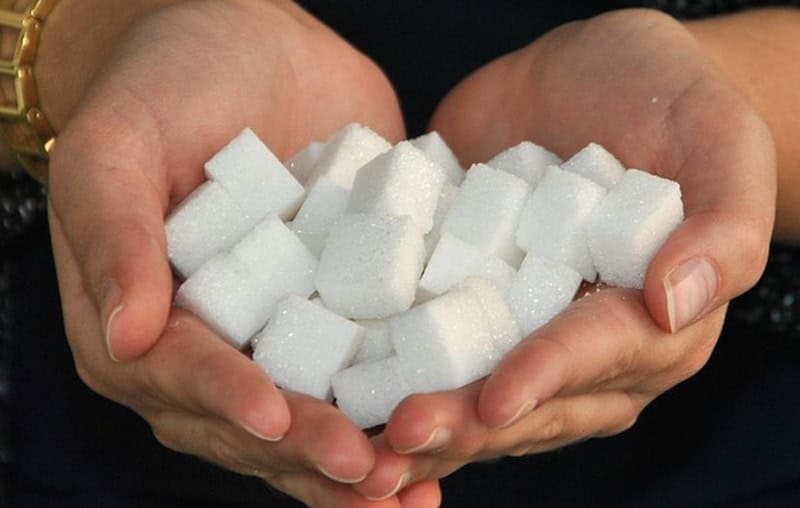The refining process of beet sugar vs cane sugar varies, affecting the final product’s characteristics.
The refining process of beet sugar vs cane sugar varies, affecting the final product’s characteristics.
Blog Article
Discovering the Distinctions in Usages and Advantages In Between Beet Sugar Vs Cane Sugar
In the culinary globe, the choice in between beet sugar and cane sugar is not just regarding sweetness but entails a nuanced consideration of flavor, application, and impact. While both sugars come from different plants, each goes through unique manufacturing procedures that subtly influence their characteristics and viability for different recipes. As chefs and consumers progressively focus on both the ecological and taste profiles of their active ingredients, recognizing these distinctions becomes critical. This expedition uses insight right into just how each sugar type can best enhance culinary creations.
Beginnings and Production Processes of Beet and Cane Sugar

Walking stick sugar, on the other hand, comes from the sugarcane plant, an exotic yard native to Southeast Asia but now cultivated in exotic zones worldwide - beet sugar vs cane sugar. The manufacturing of cane sugar begins with the harvesting of cane stalks, which are squashed to launch the juice.

Nutritional Material and Wellness Considerations

When comparing the dietary content of beet sugar and cane sugar, it ends up being apparent that both types basically give the very same calorie worths, with around 16 calories per tsp and no considerable nutrient diversity. Each is composed practically completely of sucrose, which is a simple carb that supplies fast power but lacks vitamins, minerals, or fiber. This resemblance reaches their effect on health, particularly worrying blood sugar level degrees. Both sugars, when eaten in excess, can contribute to elevated blood glucose degrees, a danger variable for diabetic issues and various other metabolic disorders. Extreme intake can lead to weight gain and dental troubles, as both sugars are similarly cariogenic, promoting tooth decay. From a health viewpoint, regulating intake of any type of sugar, whether from beet or cane, is a good idea to prevent these potential unfavorable impacts on well-being. Therefore, neither holds an unique benefit over the other in regards to health benefits.
Flavor Accounts and Culinary Applications
Despite their comparable chemical frameworks, beet sugar and cane sugar vary subtly in flavor, which can affect their use in different culinary contexts. Cane sugar typically carries a tip of molasses, also in its refined kind, providing a warm, caramel-like undertone that boosts baked items, coffee, and chocolate-based dishes. On the various other hand, beet sugar is defined by its extremely refined, neutral preference, making it a functional sugar that does not change the taste profiles of recipes.
Environmental Effect and Sustainability
While both beet and cane sugars are stemmed from plants, their ecological impacts differ significantly because of the distinct approaches of farming and handling needed for each. Sugar beet growing often look at this now involves extensive automation, which can boost fossil fuel consumption and carbon exhausts. Beets can be expanded in cooler environments and require much less irrigation, possibly reducing water usage compared to sugarcane. Sugarcane, on the other hand, is commonly grown in tropical regions where it relies heavily on irrigation and a longer growing duration, boosting its water footprint.
Additionally, the processing of sugarcane commonly produces a significant quantity of waste, consisting of bagasse, which, although usable as biofuel, often adds to air pollution if burned inefficiently. Sugar beet processing makes use of more of the raw materials, causing less waste. Both sectors face difficulties in decreasing Our site their environmental impacts, yet recurring technologies in farming methods and waste monitoring are intending to enhance sustainability.
Economic Factors Affecting the Sugar Market
The economic dynamics of the sugar sector are considerably influenced by international market demands and profession plans. Aspects such as tariffs, subsidies, and international trade contracts play crucial duties in forming the competitive landscape. For example, in areas where sugarcane or sugar beet production is subsidized, producers may have a monetary advantage that allows them to offer reduced rates on the international market. This can produce website link disparities in earnings and market accessibility for producers in countries without such subsidies.
Furthermore, variations in global demand for sugar, influenced by dietary fads and commercial usage in food items, straight influence prices and production levels. beet sugar vs cane sugar. Climate condition additionally play a critical function, as they can considerably impact crop returns and, as a result, the supply chain. This variability introduces a level of financial unpredictability that can bring about financial investment volatility in sugar manufacturing sectors, influencing choices from planting to market approach
Final Thought
To conclude, both beet and cane sugar have unique qualities that suit different culinary demands. While cane sugar imparts a rich flavor suitable for enhancing baked products, beet sugar's neutrality is perfect for lighter recipes. Nutritional resemblances regardless of, their unique production procedures and environmental influences add complexity to the choice in between them. Hence, comprehending these distinctions assists cooks and customers make educated decisions that straighten with their wellness, cooking, and honest preferences.
Report this page